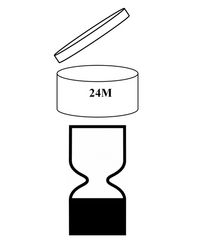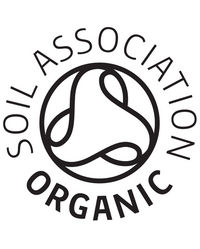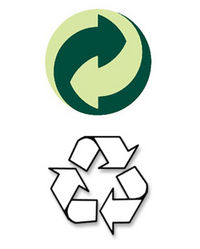A few things to consider for creating the back labels for my products:
Cosmetic Label Symbols: What They Mean
By Amanda Bown
The cosmetic symbols on your beauty products indicate shelf life, ingredients and what you need to know to keep your skin safe. Since our make-up and skin care goods can harbour some pretty nasty bacteria, it's about time you got the lowdown on whatcosmetic labeling means.
Make-Up Hygiene
We're a grubby lot when it comes to looking after our make-up. According to a survey carried out by Debenhams in 2010, some women keep their cosmetics up to 15 years past their sell-by date. So, even if you are not sure what the symbols mean (read our glossary below for the details), if you haven't cleaned out your handbag for a while and your eyes, skin or lips start to itch, ditch that make-up quick!
- The recommended lifespan of a mascara is six months but on average we use them for up to a year. Mascara wands are breeding grounds for the bacteria that cause conjunctivitis.
- Dirty make-up brushes and sponges are ripe with the micro-organisms that cause herpes, ringworm and impetigo (an infectious skin disease that causes scabs and blisters). Yet 71% of women say they never clean them. Wash your brushes and sponges in a mild soapy solution once every two to three weeks and leave to dry completely.
- Eyeshadow and blusher have a recommended lifespan of 18 to 24 months but they are kept on average for 180 months - that's 15 years.
- 60% of us regularly share make-up with our friends - multiplying the chances of infection.
- If your make-up looks or smells strange, has dried out or has changed in texture, it's bad. Throw it out!
All of which explains why the EU goes to great lengths to save us from ourselves by using the symbols we find on the back of packaging. Reading the fine print is probably the last thing you think of when you gleefully rip off the packaging from your brand new beauty buy but Paul Crawford from the Cosmetics, Toiletry and Perfumer Association says it's worth taking a few moments to study your goods: "The information will explain how to get the best results out of your products, and how to use them safely."
Cosmetic Symbols
The study by Debenhams revealed that 89% of us have no idea what these little logos mean. Read on to find out more.

Product Durability
The 'lid' symbol [top] indicates the recommended number of months within which the product should be used after it's first opened. Cosmetic products that have a lifespan of less than 30 months must show a 'best before end of' date - this may be shown as the 'egg timer' symbol [bottom], followed by the date. "Some products, such as aerosol and perfumes, don't require any dates to be shown as they don't deteriorate in the same way, due to their high alcohol content, or because they come in single-use packs," says Crawford.

Certified Organic
Products carrying this logo must have clear labelling and product formula, approved by the organic product watchdog, the Soil Association. They must use the maximum possible amount of organic ingredients (95%).
A product can flag that it contains organic ingredients if they amount to 70% or more of the total formula - although they can't claim that the overall product is 'organic'.
_A3.jpg)
Ingredients
Ingredients legally have to be listed on either the outer packaging, carton or tube, jar or bottle - in descending order of concentration. "Due to the range of shades in lipsticks and make-up, colours are listed together at the end ofingredient lists. They may be preceded by the 'may contain' symbol, which is often a '+/-' logo," says Crawford.

More Information
This symbol indicates that further information is included within the packaging. "Instructions for use of the product need to be clearly labelled if they're unusual, or specific to that product, or if there are any warnings, such as specific storage instructions and avoidance of use on specific areas," says Amanda May Watson of Neal's Yard Remedies.
P_A3.jpg)
EU Standards
The 'e' symbol refers to the net contents - the amount of product in the package. The logo is a guarantee that the quantity of the product printed on the packaging is correct, according to EU standards.

Recycling & Other Symbols
The Green Dot symbol [top] doesn't refer to recycling as commonly thought. It is a hallmark of European legislation that refers to waste management but has no legal meaning in the UK (it will be on your packaging if the manufacturer uses a global design but under UK law it's redundant). For more information, visit Valpak. The second image [bottom] is a typical recycling symbol. Read more information about the type of packaging that can and can't be recycled in the UK at Waste Online.

No comments:
Post a Comment